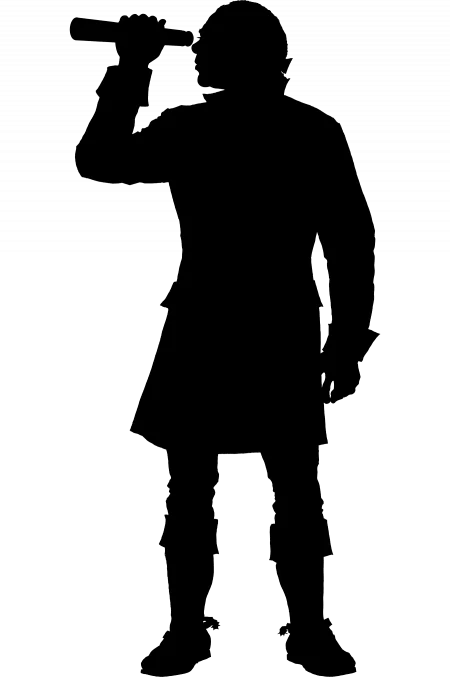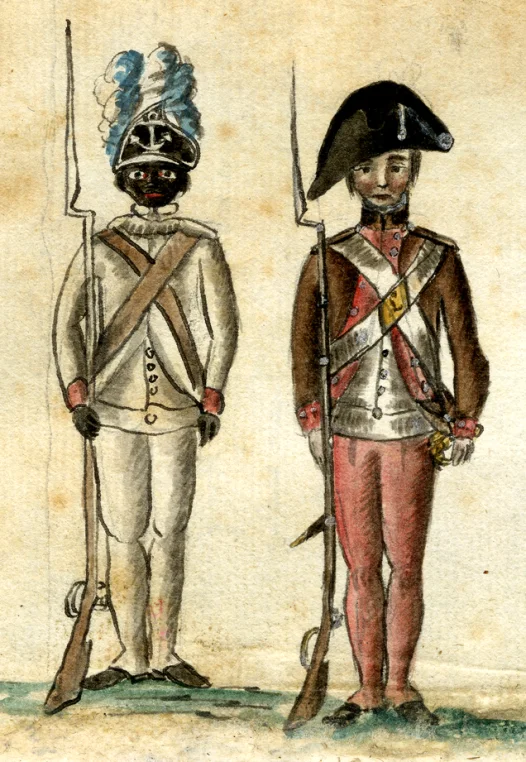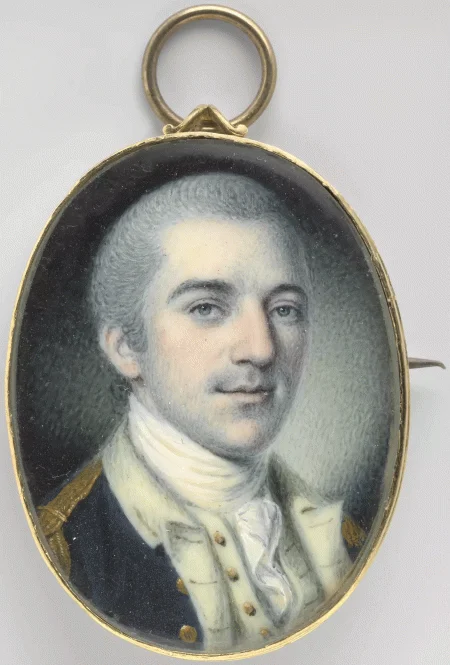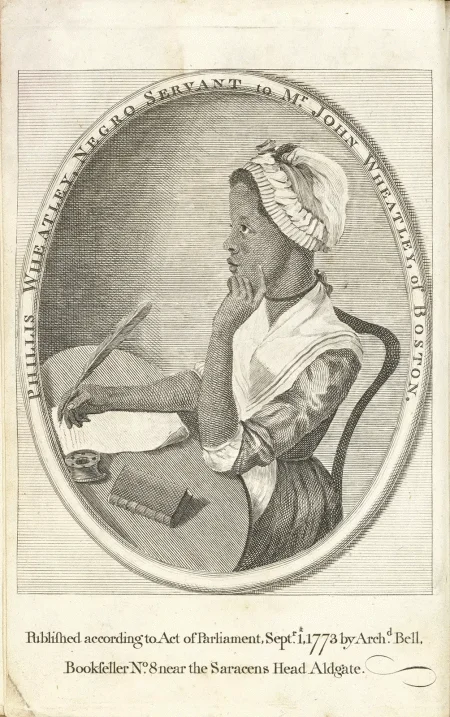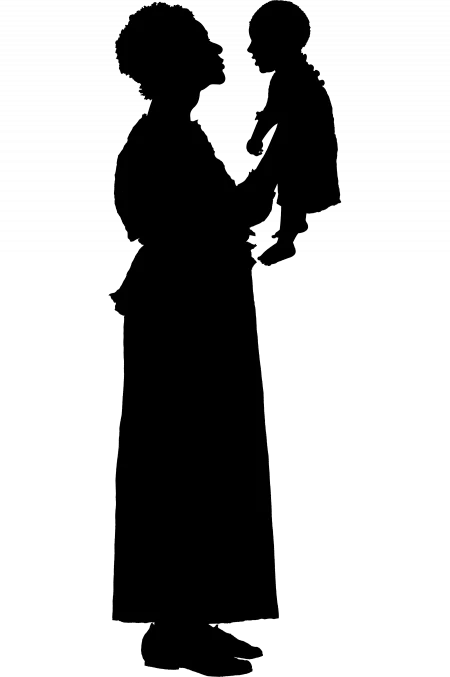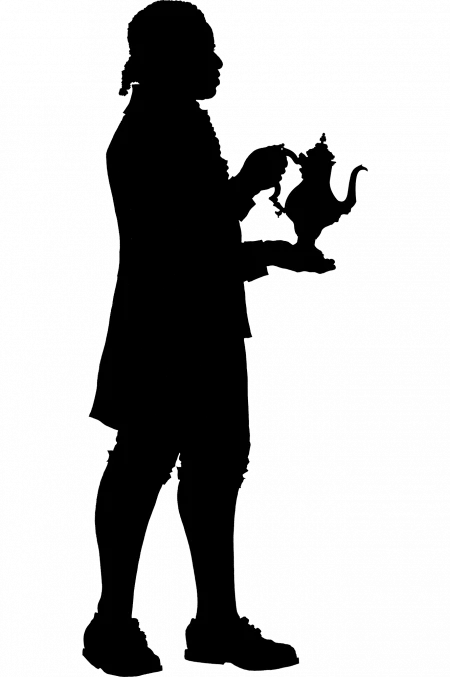The degree to which many aspects of George Washington’s legacy—proven military leader, successful entrepreneur, dedicated family patriarch—hold true regardless of which century’s standards he is judged against remains remarkable.
When considering his evolving attitudes toward slavery and the role he played in both its contemporary practice and eventual abolition, Washington is best considered in the context of his 18th-century culture.
"A Slave Society"
Raised in Virginia during the first half of the 18th century, George Washington was part of what historian Ira Berlin terms a “slave society,” in which “slavery stood at the center of economic production” and every relationship, from “the most intimate connections between men and women to the most public ones between ruler and ruled, all relationships mimicked those of slavery.”
Everything around the young Washington would have reinforced the concept that God and society both saw slavery as something right and natural. His father and many of their neighbors were slave owners; those who did not own slaves would have aspired to do so. Both the Bible and the Greco-Roman classical works that served as textbooks for young scholars of the period contain numerous references to slaves and the institution of slavery, as well as details of the laws governing the practice of slavery in those societies. By the time of Washington’s birth, slavery had been a fact of Virginia life for almost a century and was a seemingly indispensable part of the economic, social, legal, and political fabric of the colony.
Young Slave Owner
Washington himself became a slave owner at the age of 11, when he inherited “ten negro Slaves” upon the 1743 death of his father, although it was several years before he took possession of them. About 1750, the division of Augustine Washington’s enslaved people was finally made, perhaps brought on by the fact that 18-year-old George had made his first land purchase, with money earned from his surveying work.
There had been some natural increase in the enslaved population in the ensuing seven years, so the young man actually acquired 11 enslaved people, valued at £202.10.0. The death of George Washington’s older half-brother Lawrence in 1752 brought him another eleven enslaved individuals between 1754 and 1762.
When considering his evolving attitudes toward slavery and the role he played in both its contemporary practice and eventual abolition, Washington is best considered in the context of his 18th-century culture.
Increasing Slaveholdings
As a young adult, George Washington purchased several additional enslaved people, but it was his January 1759 marriage to Martha Dandridge Custis that increased his overall wealth and, with it, his slaveholdings dramatically. His bride’s first husband, 46-year-old Daniel Parke Custis, died suddenly in the summer of 1757 without leaving a will—a failure that had serious ramifications for both his family and the people he enslaved for decades into the future. This unexpected death left his 26-year-old widow with two very young children to raise alone, plus the responsibility of managing more than 17,000 acres of land and almost 300 enslaved people.
Her “dower” share of the Custis estate brought her a life interest in one-third of her late husband’s property, including 84 enslaved people; the remainder of the estate was divided between her two children. Of the dower slaves, 12—at least six who worked in the house, a child, and several tradespeople—appear to have accompanied Martha Washington to her new home at Mount Vernon shortly after the marriage. The others remained in southern Virginia to work Martha Washington’s dower lands. Still others were brought up to Mount Vernon later, including 22 people who came north from the Custis plantations in 1770.
In addition to the enslaved people from the Custis estate, during the 21 years prior to the start of the Revolution, George Washington purchased more than 60 enslaved people. In all these transactions, there is no evidence that Washington viewed the people he enslaved as anything more than property.
First Hints of Opposition
George Washington may well have been in his thirties before he ever heard a philosophical critique of slavery. That criticism came from his longtime friend and neighbor, George Mason of Gunston Hall Plantation. Mason wrote to Washington in 1765 that “The Policy of encouraging the Importation of free People & discouraging that of Slaves has never been duly considered in this Colony, or we shou’d not at this Day see one Half of our best Lands in most Parts of the Country remain unsetled [sic], & the other cultivated with Slaves.”
Mason believed that the preference for the use of enslaved workers had an “ill Effect …. upon the Morals & Manners of our People” and went on to say that “one of the first Signs of the Decay, & perhaps the primary Cause of the Destruction of the most flourishing Government that ever existed was the Introduction of great Numbers of Slaves—an Evil very pathetically described by the Roman Historians.”
Washington’s first public statement on the subject, nine years later, was less a critique of slavery than one of the slave trade. As tensions mounted with Britain, and after Virginia’s royal governor dissolved the House of Burgesses, Washington served as chairman of a “general Meeting of the Freeholders and Inhabitants of the County of Fairfax,” to determine what action he and his fellow citizens were willing to undertake to support Boston, especially in regard to banning commerce with the mother country. The document they drew up and signed in July 1774, known as the Fairfax County Resolves, included, as the 17th item, the statement “that during our present Difficulties and Distress, no Slaves ought to be imported into any of the British Colonies on this Continent; and We take this Opportunity of declaring our most earnest Wishes to see an entire stop for ever [sic] put to such a wicked cruel and unnatural Trade.”
George Washington as First Colonel in the Virginia Regiment, Charles Willson Peale, oil on canvas, 1772 [U1897.1.1]. Gift of George Washington Custis Lee, University Collections of Art and History, Washington & Lee University, Lexington, Virginia.
The Revolutionary Spirit of Liberty
Then came the Revolutionary War, which radically altered Washington’s feelings about slavery—evidence that he truly believed the wartime rhetoric about freedom and liberty.
Washington himself made use of this language and could hardly fail to see the irony when he expressed the view to an old friend in the summer of 1774 that the British authorities, “from whom we have a right to Seek protection,” were “endeavouring by every piece of Art & despotism to fix the Shackles of Slavry [sic] upon” the Americans.
Two years later, in orders to his soldiers at Cambridge, he reminded them that “It is a noble Cause we are engaged in, it is the Cause of virtue and mankind,” and that “Freedom, or Slavery must be the result of our conduct.”
When Washington wrote, a few years after the close of the war, that “Liberty, when it begins to take root, is a plant of rapid growth,” he was simply noting what he had found to be true in his own life. Within three years of the start of the war, Washington, who had been a slave owner for 35 of his 46 years, confided in a cousin back in Virginia that he longed “every day… more and more to get clear of” the ownership of people.
As he explained a few months later, “it would be a matter of very little consequence to me, whether my property is in Negroes, or loan office Certificates.” But in trying to decide about selling his enslaved people, he admitted to having “scruples,” arising from “a reluctance in offering these people at public vendue [sic], and on account of the uncertainty of timeing [sic] the sale well.”
Washington, who had been a slave owner for 35 of his 46 years, confided in a cousin back in Virginia that he longed “every day… more and more to get clear of” the ownership of people.
About a decade later, Washington refused to purchase a particular person, commenting that he already had “as many Slaves as I wish,” and that he was not willing to exchange others for him, “because I do not think, it would be agreeable to their inclinations to leave their Connexions [sic] here, and it is inconsistent with my feelings to compel them.”
During the war, Washington had traveled to parts of the country that were, in the words of historian Ira Berlin, “societies with slaves.” In contrast to Virginia, in New England and the mid-Atlantic colonies, “slaves were marginal to the central productive process; slavery was just one form of labor among many.”
It was also during the war that Washington saw black soldiers fighting alongside whites in the Continental Army. In fact, within seven months of taking command, Washington approved the enlistment of free black soldiers, something he and the other general officers had originally opposed. The process began in late 1775 by re-enlisting free blacks who had fought in the army previously and been let go, much to their disappointment, when Congress disapproved of their presence.
Five years later, Washington proposed a method for reorganizing two Rhode Island regiments, noting that objections could best be handled by dividing the black soldiers who made up the one unit evenly between the two and making up the difference with new recruits, so “as to abolish the name and appearance of a Black Corps.”
In essence, he had integrated the army.
Influential and Idealistic Voices
During the Revolution, Washington was also exposed to the views of several idealistic young members of his staff who ardently opposed slavery and whose opinions he valued.
John Laurens
John Laurens, for example, proposed the formation of an African American corps in his home state of South Carolina, allowing that the soldiers would receive their freedom after service. Early in 1782, when trying to determine what the British would do next and thinking that they might send reinforcements to Charleston, Washington wrote to Laurens, “I know of nothing which can be opposed to them with such a prospect of success as the Corps you have proposed should be levied in Carolina.”
Alexander Hamilton
Just a few years after the war ended, Washington’s former aide Alexander Hamilton became one of the earliest supporters of the Society for Promoting a Manumission of Slaves. Hamilton also signed a petition to the New York legislature, calling for the abolition of the slave trade, something he referred to as “a commerce … repugnant to humanity, and … inconsistent with the liberality and justice which should distinguish a free and enlightened people.”
Marquis de Lafayette
Although Laurens had died during the war, Hamilton continued to correspond with the Marquis de Lafayette about the abolition of slavery. When he learned about the society’s formation from a New York newspaper, Lafayette wrote to his former brother-in-arms that he felt the wording “Against the slavery of negroes” was done “in such a way as to give no offense to the moderate Men in the Southern States,” an acknowledgment of the sensitivity of the issue in American politics. Knowing Hamilton’s views on the subject, he noted that “As I ever Have Been partial to my Brethren of that Colour, I wish if you are one in the Society, you would move, in your own Name, for my Being Admitted on the List.”
Phillis Wheatley
The Revolution also brought Washington into contact with Phillis Wheatley, a gifted young woman who would have opened his eyes to—or at the very least led him to question—the abilities of the Africans and African Americans with whom he had lived since childhood. Captured and enslaved as a girl of seven or eight in Africa, Wheatley was brought to Boston, where she was purchased by a tailor, John Wheatley, as a servant for his wife. Phillis was educated and begun writing poetry by the time she was about 13. She had a poem published four years later and was taken to London at 20, where she was introduced to British society and had a book of her works published.
In October 1775, Phillis Wheatley sent a letter to George Washington from Providence, Rhode Island. Assuring him that she wished “your Excellency all possible success in the great cause you are so generously engaged in,” she enclosed a long, laudatory poem filled with classical allusions that she had written in his honor. Washington shared the correspondence with a friend in Philadelphia, and it was later published in at least two American newspapers. Washington also wrote directly to Wheatley, thanking her for her work and inviting her to visit him at his headquarters. He went on to say that “I shall be happy to see a person so favourd [sic] by the Muses, and to whom nature has been so liberal and beneficent in her dispensations.”
John Laurens, Charles Wilson Peale, 1780, Watercolor on ivory, National Portrait Gallery, Smithsonian Institution, Conserved with funds from the Smithsonian Women's Committee.
After the War
Following the Revolution, Washington continued to be exposed to arguments about abolishing slavery, expanding on his wartime experiences. He was approached directly, both in person and through correspondence, by abolitionists in Britain and the United States, who often sent him copies of their writings.
As a result, by the end of his life, Washington’s library contained a small collection of works by such authors as Anthony Benezet, George Buchanan, Thomas Clarkson, Bryan Edwards, and Granville Sharp. In responding to them, Washington stated over and over his conviction that the best way to affect the elimination of slavery was through individual state legislatures, which he hoped would set up a program of gradual emancipation, and for which he would gladly give his vote.
In 1786, Washington assured his friend and Pennsylvania Senator Robert Morris that he hoped that no one would read his opposition to the methods of certain abolitionists as opposition to abolition as a concept:
I hope it will not be conceived from these observations, that it is my wish to hold the unhappy people who are the subject of this letter, in slavery. I can only say that there is not a man living who wishes more sincerely than I do, to see a plan adopted for the abolition of it—but there is only one proper and effectual mode by which it can be accomplished, & that is by Legislative authority: and this, as far as my suffrage will go, shall never be wanting.
A few months later, he told another friend, “I never mean (unless some particular circumstance should compel me to it) to possess another slave by purchase; it being among my first wishes to see some plan adopted, by which slavery in this country may be abolished by slow, sure, and imperceptible degrees.”
Unfortunately, while other states to the north had either abolished slavery entirely or set up plans for gradual manumission, Virginia did not. Thus, Washington would eventually have to act privately to free the 123 enslaved people who belonged to him personally, as opposed to those who were part of the Custis estate. In his will, Washington made arrangements to free his longtime valet William Lee immediately upon his death. The document also required that the remainder people Washington owned be emancipated following the death of Martha Washington.
However, a series of suspicious fires at Mount Vernon following Washington’s death convinced Martha and her family that one or more of those people was trying to kill her, and concerns for her safety prompted the manumission to occur on January 1, 1801.
Sadly, the 153 remaining dower slaves—representing nearly half of the enslaved population at Mount Vernon—belonged to the Custis estate and could not be freed by either George or Martha Washington. On Martha’s death, they were dispersed among her grandchildren, even though the action meant splitting up families, dividing husbands, wives, and children.
Female field workers like Kate wore coarse linen shifts—long, loose-fitting shirts—tucked into a skirt. Kate also worked as a midwife. As George Washington’s property, Kate and her living children—Molly, Virgin, and Kate—became free in 1801 through the provision in his will.
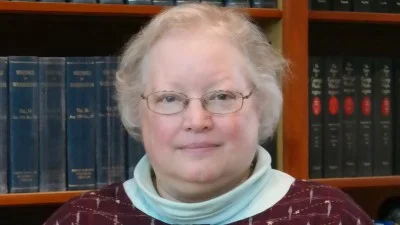
About the Author
Mary Thompson is Mount Vernon's research historian emerita. She is the author of The Only Unavoidable Subject of Regret: George Washington, Slavery, and the Enslaved Community at Mount Vernon.
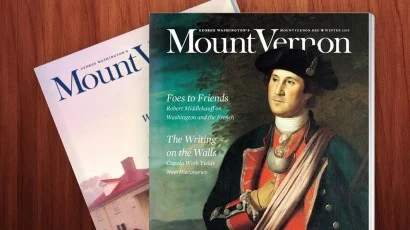
![George Washington as First Colonel in the Virginia Regiment, Charles Willson Peale, oil on canvas, 1772 [U1897.1.1]. Gift of George Washington Custis Lee, University Collections of Art and History, Washington & Lee University, Lexington, Virginia.](https://mtv-main-assets.mountvernon.org/files/styles/text_image_block/s3/callout/text-image-block-full/image/sml_peale-1772-web-2.jpg.webp?VersionId=Bs.UDvY6cYeZqpR3yWcydJTyOZR6fqST&itok=9KFIFQus)
![Portrait of Martha Dandridge Custis, John Wollaston, oil on canvas, 1757. Washington-Custis-Lee Collection, Washington and Lee University, Lexington, VA. [U1918.1.1]](https://mtv-main-assets.mountvernon.org/files/styles/text_image_block/s3/callout/text-image-block-full/image/sml_mrs-daniel-parke-custis-2.jpg.webp?VersionId=A33LDf5FPc9YruslzDcyUBIH285axxM6&itok=ECOy0vzs)
